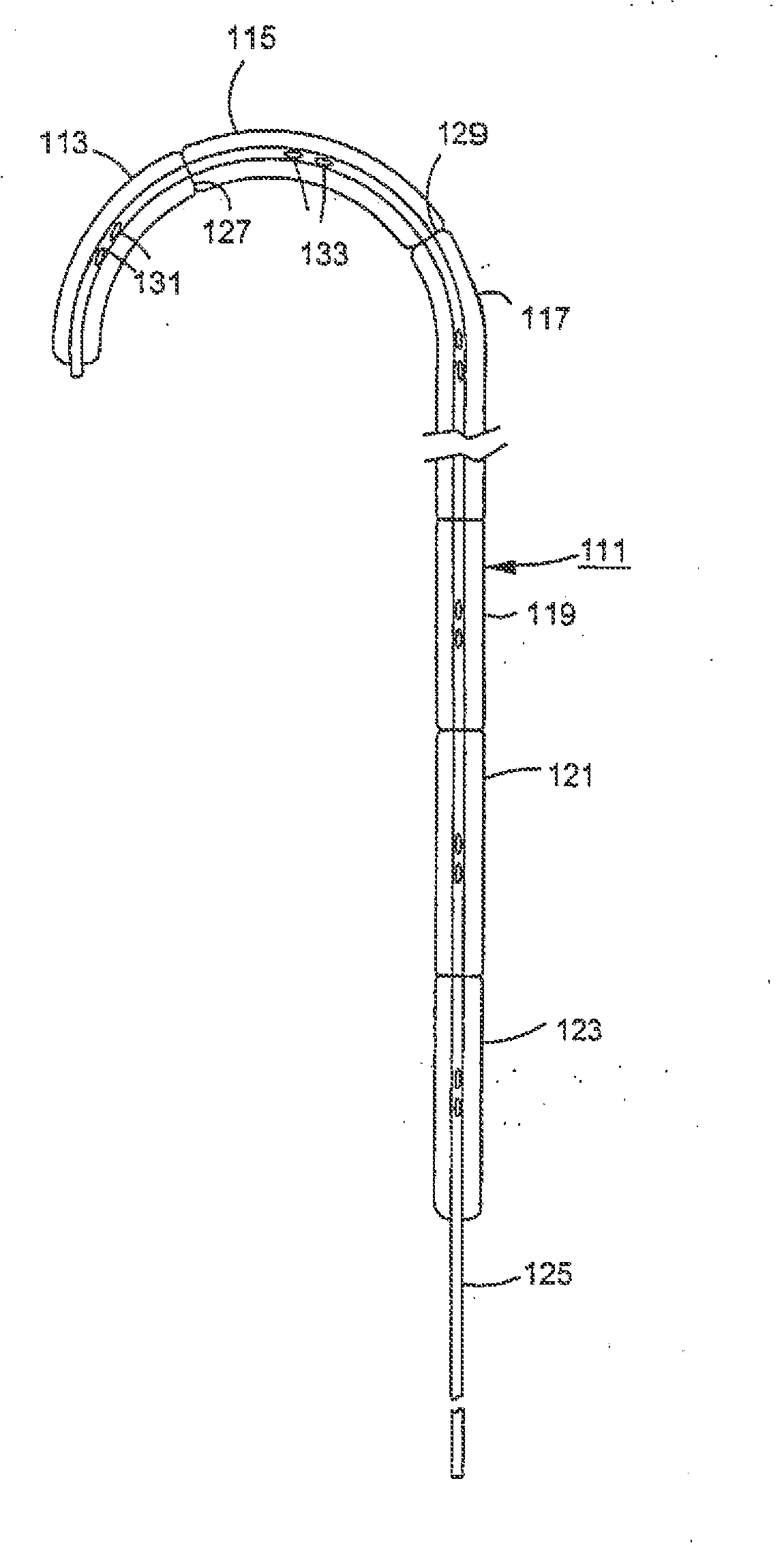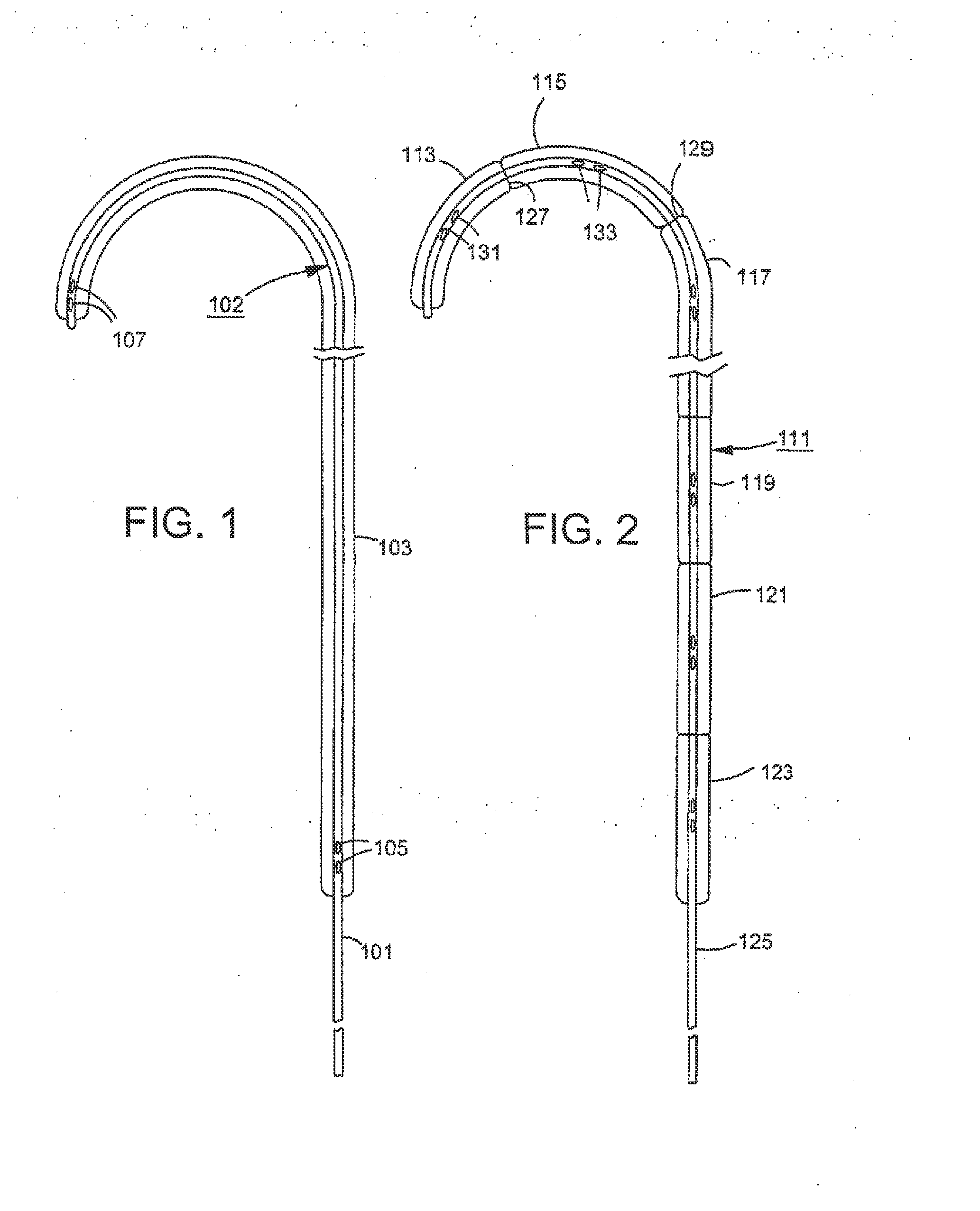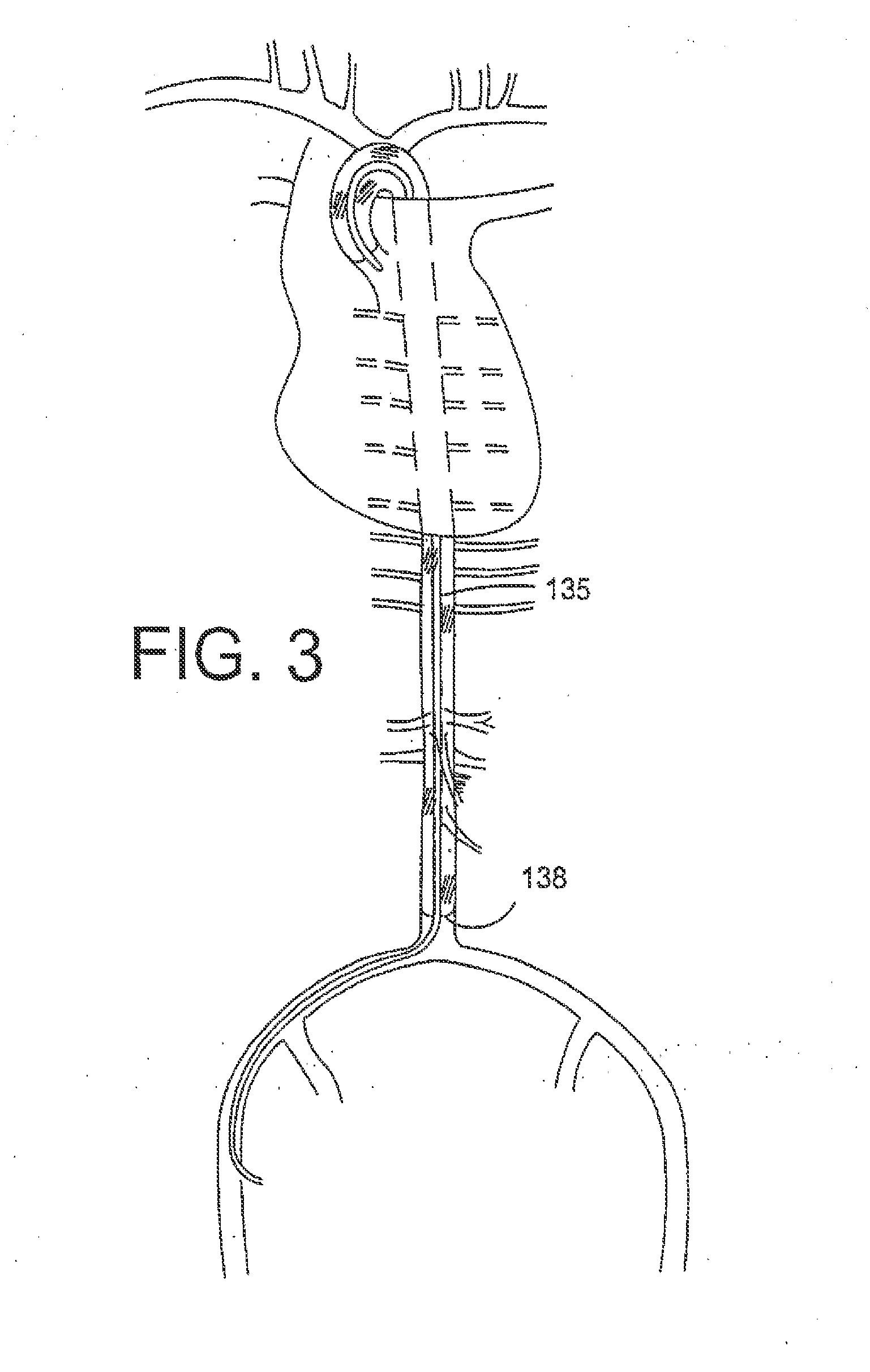Methods, compositions and apparatus for delivering heterologous molecules to cells
a technology of heterologous molecules and compositions, applied in the direction of dilators, genetic material ingredients, other blood circulation devices, etc., can solve the problems of avoiding systemic delivery of therapeutic substances, minimizing the usefulness of such methods, and four essential components of the protocol listed above have stymied clinical translation, so as to avoid the risks of histamine, papaverine, heparin, and arterial access
- Summary
- Abstract
- Description
- Claims
- Application Information
AI Technical Summary
Benefits of technology
Problems solved by technology
Method used
Image
Examples
example 1
Evans Blue Dye (EBD) Study
[0117]EBD solution was prepared as described in C. R. Bridges, et al, Ann Thorac Surg, 73 (6):1939-1946 (June 2002). A male adult Fisher rat underwent hindlimb isolation as described below.
[0118]Approximately 0.05 mg / g body weight of EBD was delivered in a sterile PBS & albumin solution. 0.16 ml of the solution was diluted to a volume of 5 ml and infused through the greater saphenous vein with a 400 torr applied pressure into the isolated hindlimb. 2.4 ml of the solution was infused slowly into the contralateral hindlimb without isolation. The rat was necropsied 30 minutes after the start of infusion.
example 2
Materials
[0119]The following materials were used in the studies described in Examples 3 and 4, which demonstrate the method in a rat and canine model, respectively.
[0120]A. rAAV and rAd
[0121]All vector was procured through University of Pennsylvania Vector Core and was tested to be replication defective and endotoxin negative.
[0122]All vector used encoded the marker gene lac-Z coupled to a CMV promoter. Varying lots of vector were used for experiments with the goal of delivering ˜1013 genome copies (GC) / kg of rAAV and 1012 particles / kg of rAd5 in isolated limb infusion studies. The isolated hemibody trials delivered ˜5×1013 GC / kg of rAAV. rAAV serotype 2 / 1 was utilized for all experiments except for preliminary studies in the rat using rAAV serotype 2 / 2. The rAAV 2 / 1 used in the dogs was an aggregate pool of 5 lots.
[0123]B. Tissue Analysis
[0124]Tissue samples were ‘snap frozen’ in isopentane cooled in liquid nitrogen at the time of necropsy. 8 micron sections were generated using a...
example 3
[0125]A. Intravascular Injection of rAAV in Rat Isolated Limbs
[0126]After anesthesia with xylene and ketamine, inbred (male adult Fisher 344) rats underwent femoral artery and vein isolation with transmuscular placement of two overlapping 2-0 prolene tourniquets at the level of the proximal thigh. Through a small incision, the greater saphenous vein was cannulated with heat-tapered polyethylene tubes (PE 10; Becton Dickinson, Sparks, Maryland) attached at their other ends to 30-gauge needles was performed. After tourniquets were tightened and the limb circulation was isolated, a total volume of 5 ml of sterile PBS and 1012 GC of rAAV encoding the lac-z marker gene was infused at pressures of 100, 200, 400 torr. The infusion time varied with delivery pressure, but the total time the rAAV solution was left in place was 30 minutes from the beginning of infusion. The tourniquets were then released and the catheter removed. The saphenous vein was ligated with a...
PUM
| Property | Measurement | Unit |
|---|---|---|
| pressure | aaaaa | aaaaa |
| temperature | aaaaa | aaaaa |
| pressures | aaaaa | aaaaa |
Abstract
Description
Claims
Application Information
 Login to View More
Login to View More - R&D
- Intellectual Property
- Life Sciences
- Materials
- Tech Scout
- Unparalleled Data Quality
- Higher Quality Content
- 60% Fewer Hallucinations
Browse by: Latest US Patents, China's latest patents, Technical Efficacy Thesaurus, Application Domain, Technology Topic, Popular Technical Reports.
© 2025 PatSnap. All rights reserved.Legal|Privacy policy|Modern Slavery Act Transparency Statement|Sitemap|About US| Contact US: help@patsnap.com



